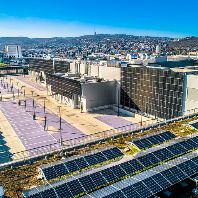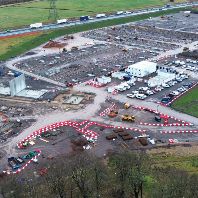Central and Eastern European (CEE) commercial real estate investment turnover reached 1.7 billion in the first half (H1) of 2010, a 190% increase compared to activity levels recorded in H1 2009, according to the latest data from CB Richard Ellis (CBRE). On a quarterly basis, investment activity in the region rose to 970 million in the second quarter (Q2) of 2010, an increase of 34% compared to volumes seen in Q1 2010, but still considerably lower than the levels seen in the period before Q4 2008.
Of the 1.7 billion transacted in H1 2010, German Open-ended Funds (GOEFs) have accounted for 300 million, or 17%, of CEE investment so far this year. Jos Tromp, Head of CEE Research & Consulting, commented: "This level of activity is remarkable, especially in light of the turbulence in the GOEFs sector and continuing economic uncertainty across Europe. RREEF's acquisition of the Grunwaldzki Center in Wroclaw, Poland, provides the most recent evidence of continued GOEF interest in Central Europe, and represents the first office acquisition by a GOEF in a regional CEE city this year."
Apart from interest from GOEFs, some other market players are showing increased activity as well. CA Immo, one of Austria's largest listed property companies, announced the takeover of the Europolis portfolio. The reported value of the portfolio is around 1.5 billion and is spread across the CEE region. The closure of this transaction is expected in early 2011.
Continuing the trend seen in Western Europe in recent months, yields in CEE have come under downward pressure. Some markets registered compression in prime shopping centre yields in Q1 2010 on the back of increased confidence in retail investment products in CEE. The office market followed in Q2 2010, with prime yield compression in many markets. The yield gap between prime asset classes has remained mostly unchanged. Prime pricing is at similar levels for offices and shopping centres, while prime industrial assets generally have yields 150-200 bps higher.
Geographically, CEE H1 2010 investment activity was concentrated in Poland, the Czech Republic and Russia; however, mainly outside the prime segment. "Most prime yields compression reflects a change in sentiment and is not backed by transaction evidence yet," added Tromp. "Despite the current shift in prime yields, there is still a difference in the trend for pricing between prime and secondary properties."
Significant market differences are emerging across the region as market fundamentals begin to indicate the future of capital value movements. Central European markets seem to have left the worst of the downturn behind. Changes in prime yields are positively influencing capital values in this part of CEE. Capital values grew even more in Eastern European cities in Q2 2010, compared to the previous quarter, because the compression in prime yields was coupled with an increase in prime rents. Conversely, some cities in South-Eastern Europe have seen decreasing prime rents and stable prime yields, resulting in a decline in prime capital values in Q2 2010 compared to the previous quarter.
Source: CB Richard Ellis















